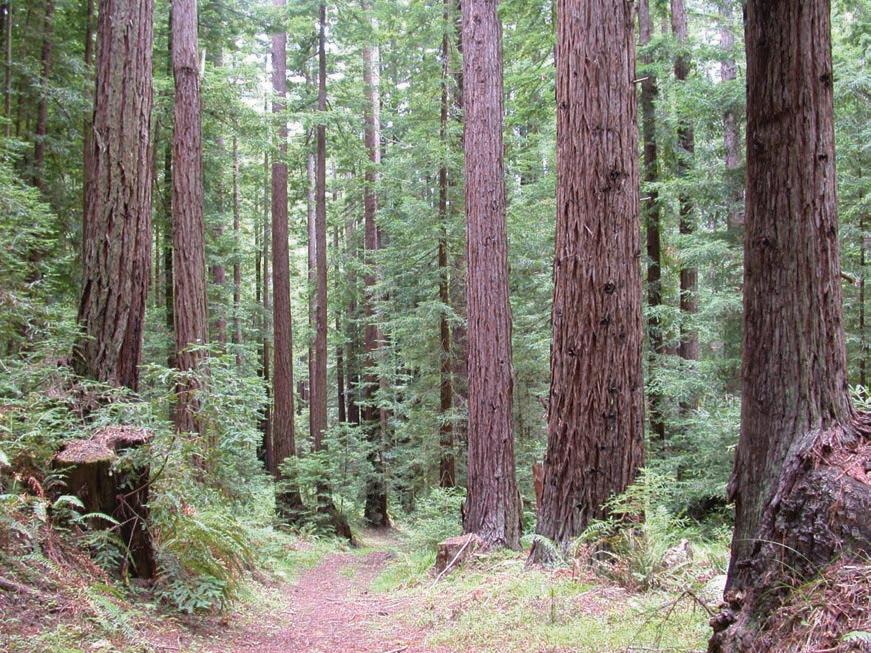PRODUCT Spotlight By Bob Berlage
LUSH REDWOOD FOREST in Northern California’s San Mateo County was clearcut in the 1870s and selectively harvested twice since then. (Photo by Big Creek Lumber)
200 years of redwood that the human species made use of wood even prior to homo sapiens. The oldest recorded wood tool is a spear made of yew dating back 00,000 years. Our use of wood has dramatically expanded despite mankind’s transition to urban existence. Far more recent and closer to home, the use of coastal redwood (Sequoia Sempervirens) as a building material began in the early 1 00s when European settlers arrived in California. Initially, the extent of redwood harvesting was limited by technology and demand. and saws and axes were used to fell the trees and lumber was occasionally produced by straddling logs over a sunken pit and slicing the logs into lumber using a two-man crosscut saw. Needless to say, the worker with less seniority was usually the one in the pit with sawdust falling on him all day. Increases in population and technology predictably resulted in increased
A
14
n
The Merchant Magazine n
harvesting of redwoods and lumber production. Two events resulted in dramatic increases in redwood harvesting in California. Coincidentally, both these events centered in San Francisco. The first was the Gold Rush (1 -1 ). While very little coastal redwood lumber found its way to the gold fields, it was the dramatic expansion of San Francisco that created the demand. Fortune seekers from all over the world arrived in San Francisco by ship and began their journey to the gold fields. San Francisco grew dramatically as the result of this immigration. The city required lumber for housing and commercial development to meet the need . The second big demand for redwood lumber resulted from the 1 0 San Francisco earthquake. Ironically, most of the wooden structures in the city survived the initial jolt. Wood is far more flexible than concrete or masonry. Unfortunately, most of the wooden structures were illuminated by gas lamps. When
March 2021
the gas lines ruptured, the gas ignited and burned most of these buildings. Post-earthquake housing reconstruction placed incredible demands on nearby redwood forests. This was particularly true in the Santa Cruz Mountains. By the late 1 0s the increase in demand for redwood lumber, coupled with the introduction of steam-powered sawmill equipment, resulted in widespread harvesting of coastal redwoods throughout California. The harvesting method was landscape-wide clearcutting. By the mid-1 0s, most of the redwood forests on the Central Coast had been cut. Shortly after World War II, there was a resurgence in construction, particularly for single-family residences. At this time some redwood lumber producers began looking at the “second-growth” redwoods, trees that sprouted from the root systems of redwoods that had been felled during the 1 00s and early 1 00s. While some old-timers felt that lumber Building-Products.com













